18 November, 2024 | News
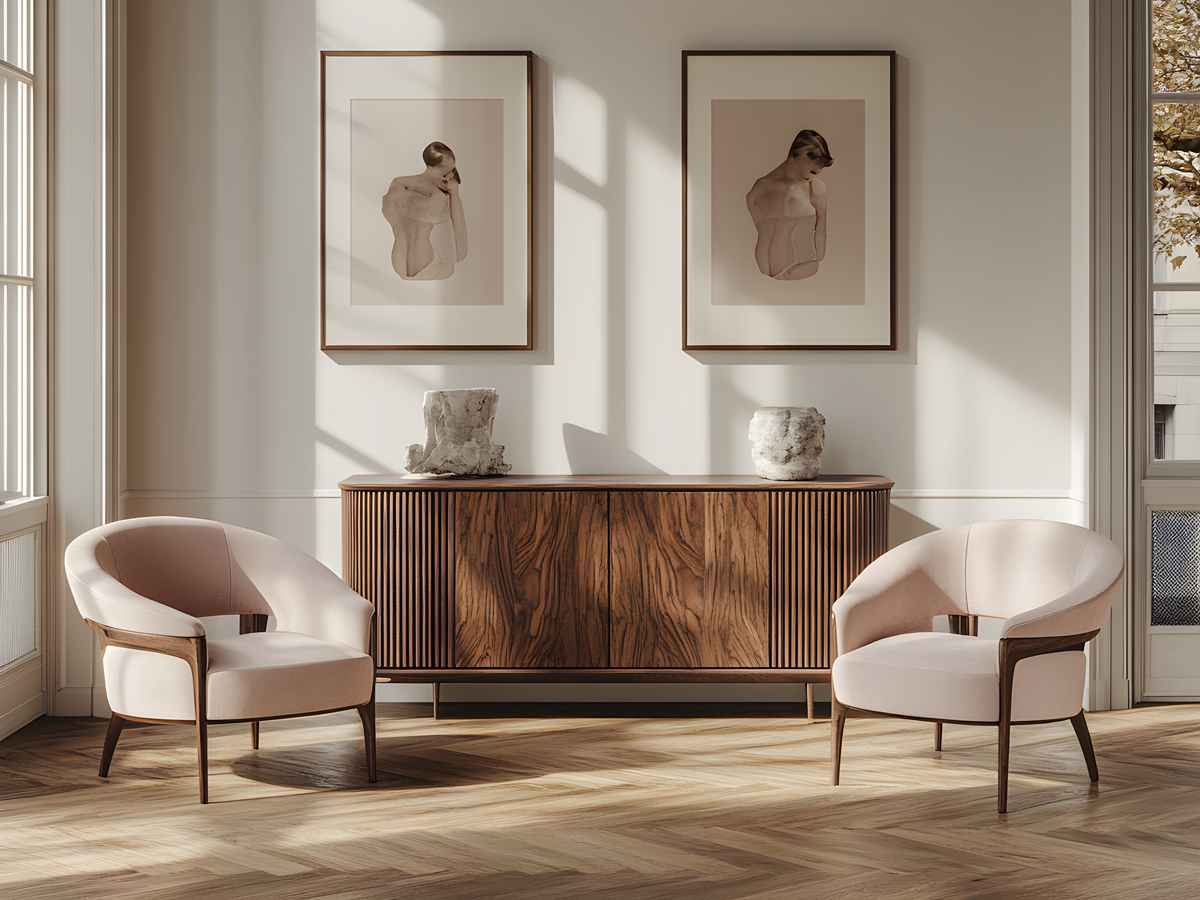
The herringbone pattern is one of the most captivating and enduring designs in the world of interior design. Historically associated with wooden floors in the most prestigious buildings and villas, it has made a comeback as the ideal choice for enriching modern spaces. Whether in residential or commercial environments, the herringbone pattern adds a touch of sophisticated elegance, adapting to various contemporary styles.
This layout has evolved over time, finding new applications and technologies that make it easier to install and maintain while preserving its aesthetic essence. Furthermore, with the introduction of materials such as porcelain tile, which can perfectly mimic the appearance of wood, herringbone patterns have become accessible to a broader audience, opening the door to countless stylistic possibilities.
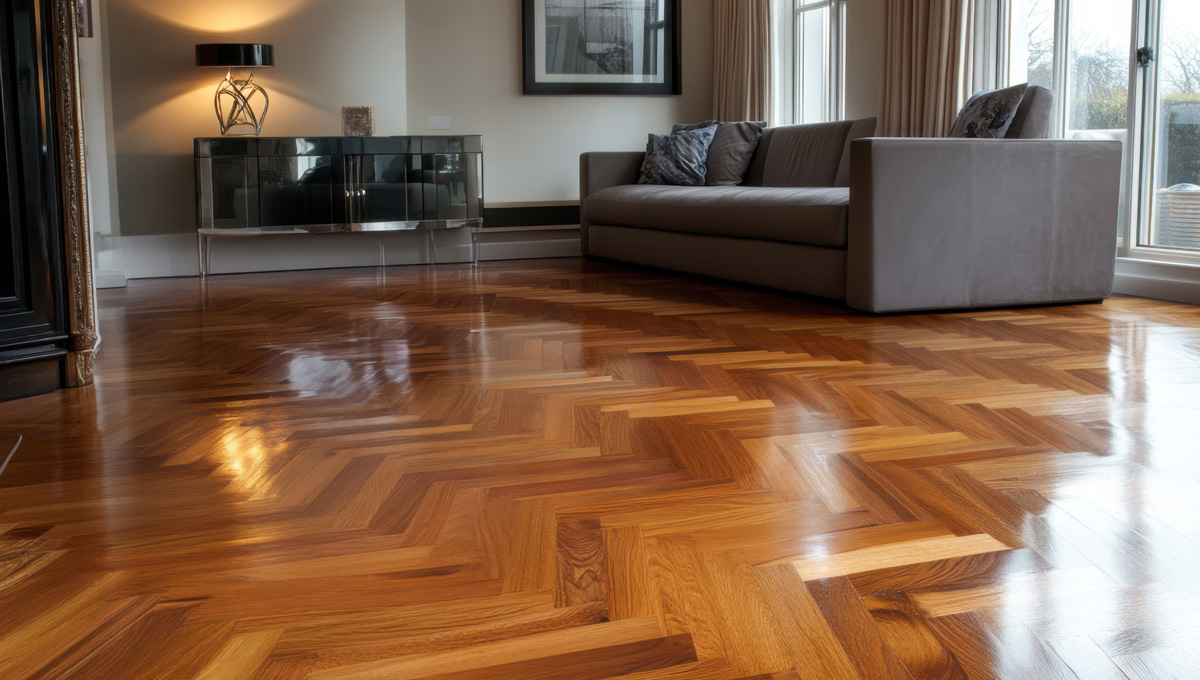
Two of the main variations of this layout are the Italian herringbone and the French herringbone, also known as the “chevron pattern.” While they may appear similar at first glance, there are fundamental differences that influence the final visual effect and installation techniques.
Italian Herringbone (Classic):
The Italian herringbone is the most commonly used pattern, characterized by rectangular planks positioned at 90-degree angles to one another. This layout creates a dynamic motif where the planks intersect perpendicularly, generating a sense of movement. The result is an energetic and lively visual effect, adding depth and texture to the space.
French Herringbone (Chevron):
The French herringbone, on the other hand, is distinguished by planks cut at a 45° or 60° angle, placed end to end to form a “V” pattern. This results in a more linear and regular appearance compared to the Italian version. This layout requires great precision and high craftsmanship, turning the flooring into a work of art. The final effect is less dynamic than the Italian pattern, offering a tidy and sophisticated aesthetic particularly suited to minimalist and modern spaces.
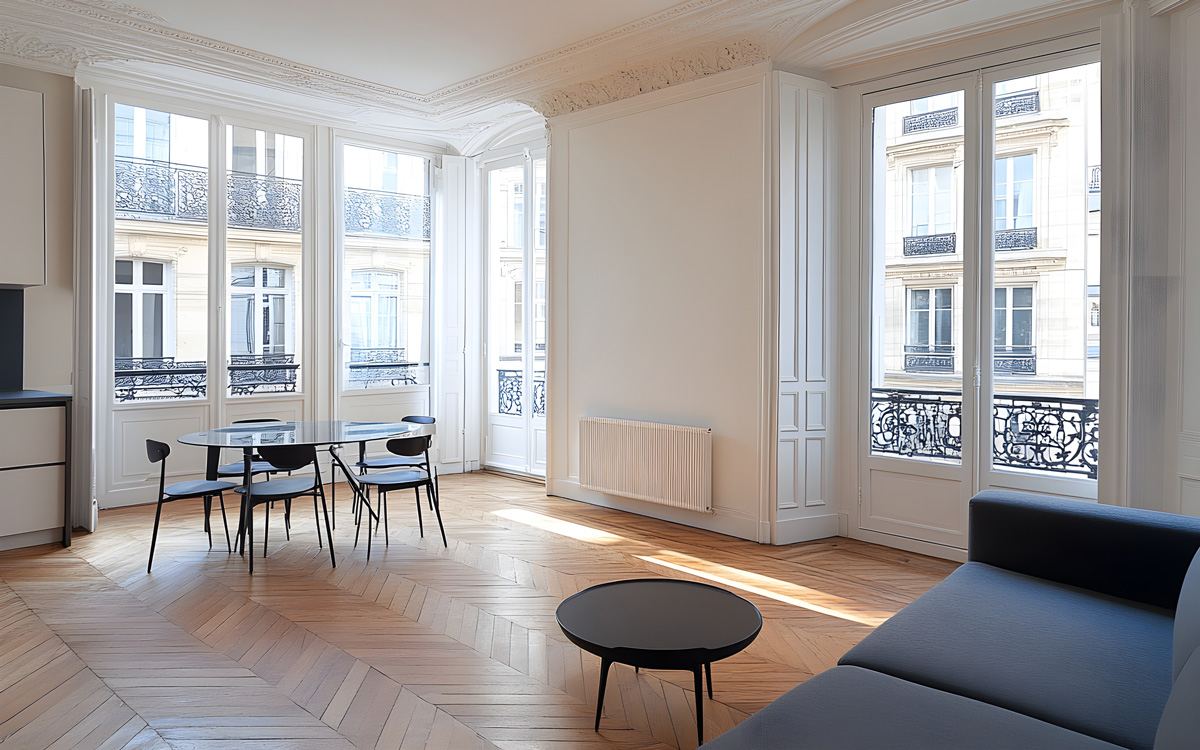
Today, the herringbone pattern is featured in numerous interior design projects due to its versatility and decorative appeal. Both the Italian and French layouts are no longer limited to wood but are also replicated using materials such as porcelain tiles, laminates, PVC, and natural stone. This expands their use in high-traffic areas like bathrooms and kitchens.
In residential settings, the herringbone pattern is an excellent choice to add a touch of refinement to domestic interiors. In living rooms and bedrooms, wood or wood-effect porcelain tiles laid in a herringbone pattern provides warmth, creating an elegant and timeless atmosphere.
The choice between the Italian or French version often depends on the decor style: the classic layout pairs well with dynamic and decorative interiors, while the chevron pattern complements minimalist and modern spaces.
In kitchens and bathrooms, wood-effect porcelain tile laid in a herringbone pattern brings the beauty of wood into these areas while ensuring resistance to humidity and easy maintenance. The herringbone flooring in these rooms becomes a standout feature, providing a sense of continuity and refinement.
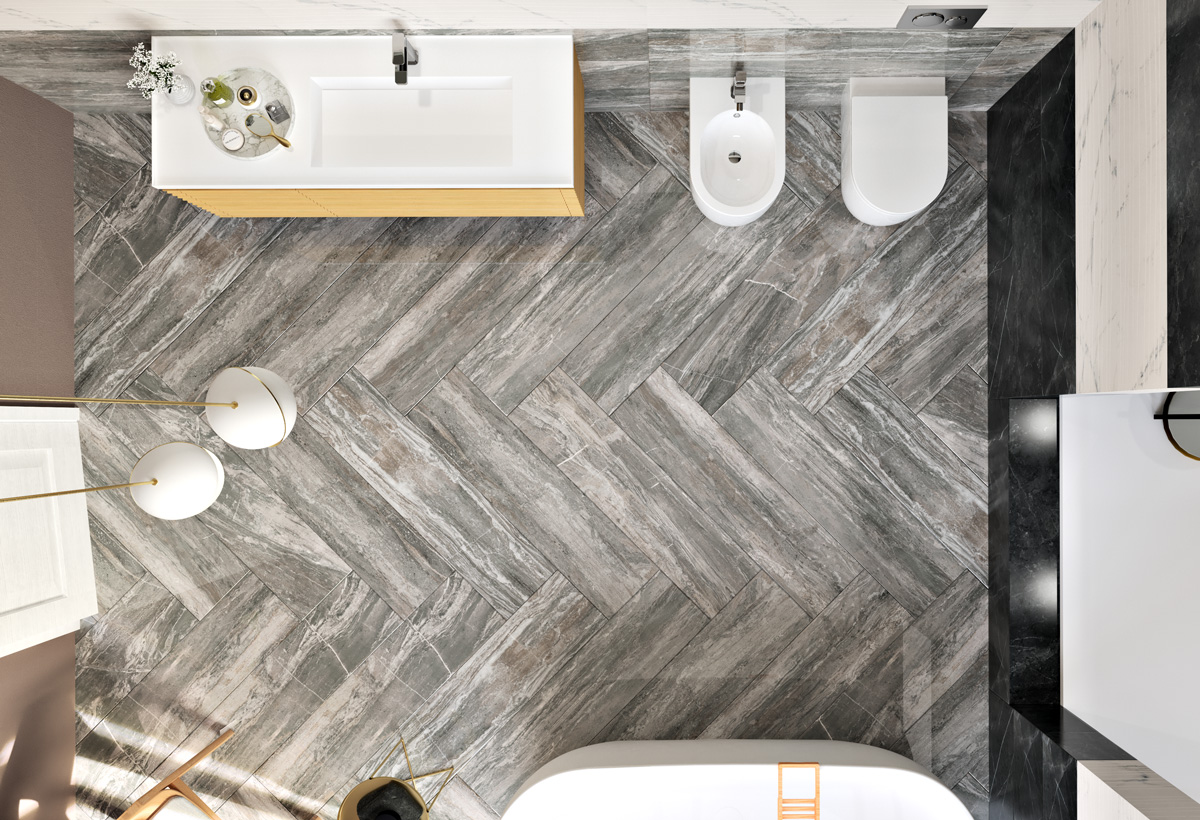
In commercial spaces, the herringbone pattern is used to add prestige and character. In offices, luxury boutiques, showrooms, and restaurants, this layout conveys elegance and uniqueness, creating a sophisticated atmosphere that suits professional and high-end settings.
The French herringbone is particularly appreciated in spaces aiming for a refined and orderly aesthetic, while the Italian version is ideal for those desiring a more eclectic and vibrant look.
The final effect of the flooring largely depends on the type of wood or porcelain tiles used and the chosen finish. For a modern look, light and cool tones, such as gray, are very popular as they express a sense of freshness and contemporaneity to the spaces. Warm tones like honey or beige, on the other hand, offer a welcoming feel, while darker colors are ideal for large rooms, adding an air of elegance and depth.
To enhance the herringbone flooring, it is essential to harmonize the furniture: pairing it with furniture of the same tone as the floor or wooden accents creates continuity and sophistication. Alternatively, contrasting elements such as colorful furniture or metallic accessories can add a touch of originality to the space.
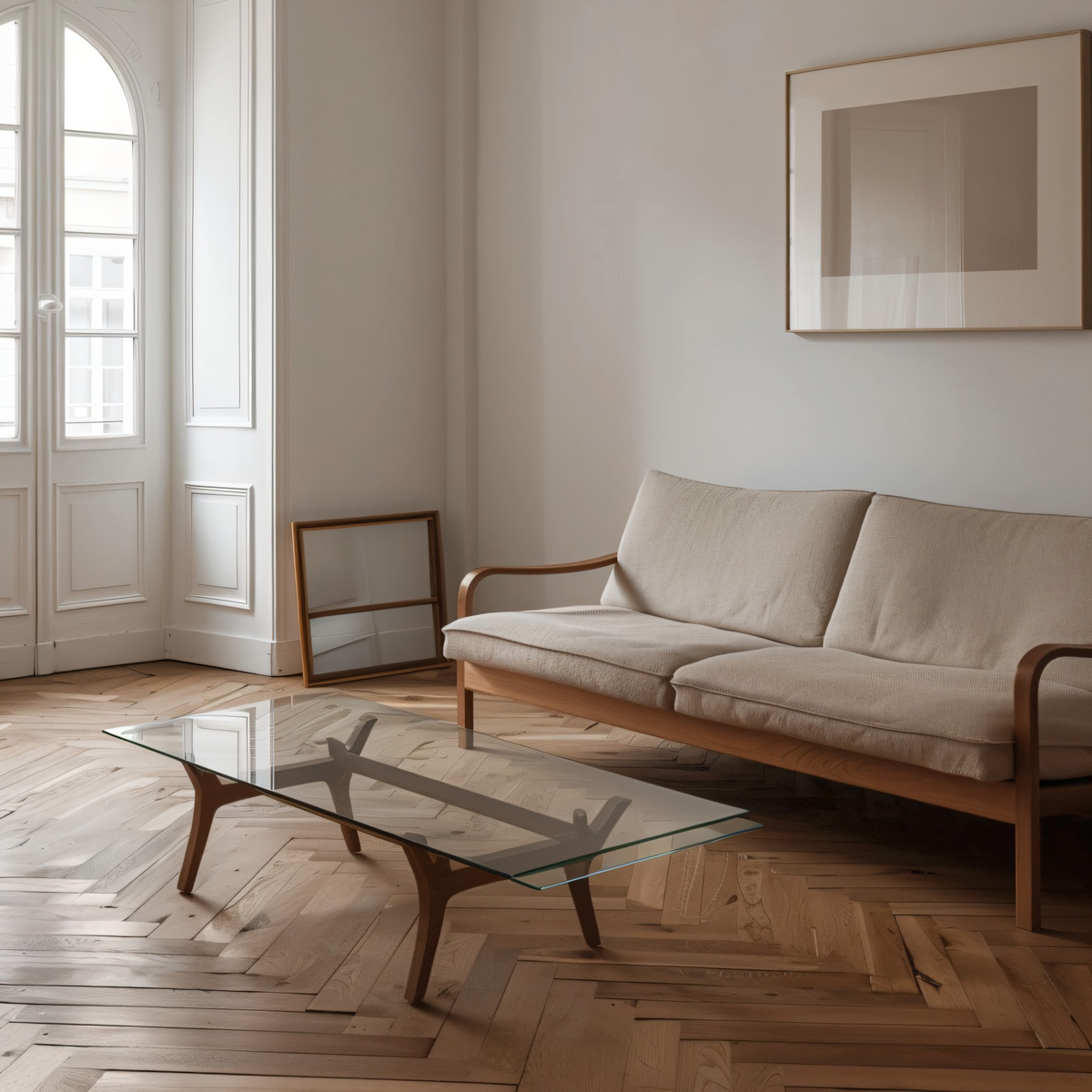
The herringbone pattern requires skill and precision. The chevron pattern, in particular, demands exact cuts to create the distinctive “V” motif, making professional expertise fundamental. Additionally, preparing the surface is crucial to avoid irregularities: the base must be perfectly leveled to ensure an impeccable result and greater durability over time.
With the professional interior design software DomuS3D, you can design spaces with any type of layout, including herringbone patterns. The software offers designers hundreds of parametric layouts of varying complexity and architectural impact, enabling you to cover any type of room.
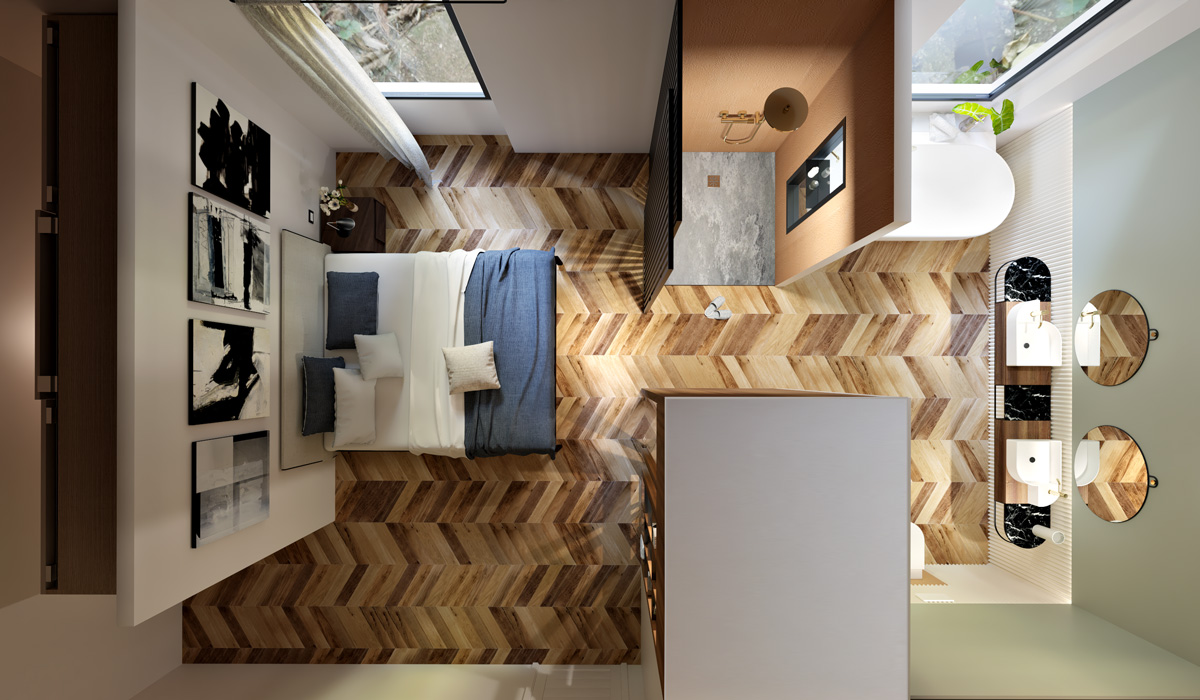
The herringbone pattern is a highly impactful stylistic choice that adds charm and value to contemporary interiors. Whether it’s the Italian or French version, this layout continues to captivate with its versatility and decorative power. Through the use of innovative materials and modern finishes, the herringbone pattern remains a timeless solution capable of adapting to modern spaces while maintaining its traditional roots.